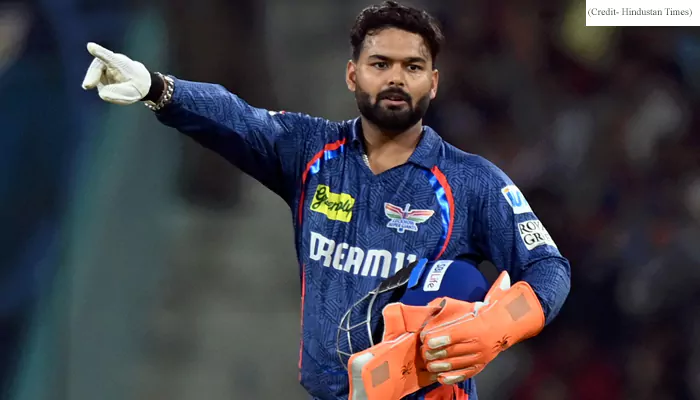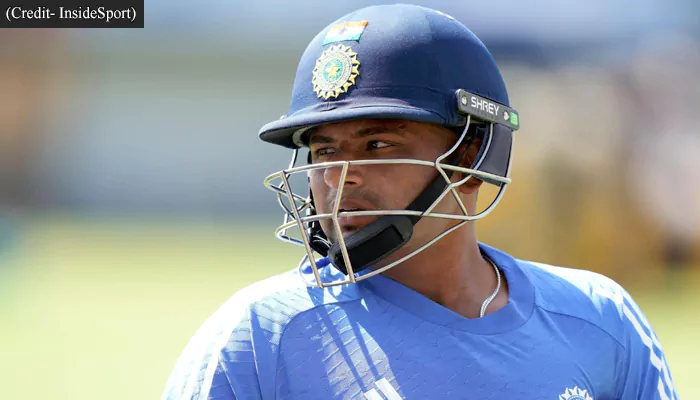IND vs. NZ Test: Will India’s Past Fourth-Innings Heroics Inspire a 359 Chase?
- Sanchari Das
- 1 year ago
- 5 minutes read

Now, with a target of 359, the current Indian squad faces a tough task
The Indian team stands on the edge of losing a home Test series for the first time since 2012, with New Zealand firmly in control at the Maharashtra Cricket Association in Pune. At stumps on Day 2, New Zealand led by 301 runs, putting India in a tight spot.
Innings Break!
— BCCI (@BCCI) October 26, 2024
New Zealand bowled out for 255.
4⃣ wickets for @Sundarwashi5
3⃣ wickets for @imjadeja
2⃣ wickets for @ashwinravi99 #TeamIndia need 359 runs to win!
Scorecard ▶️ https://t.co/YVjSnKCtlI #INDvNZ | @IDFCFIRSTBank pic.twitter.com/ABQKFK2sZt
A target of 359 looms ahead on Day 3, demanding a historic chase. Although India stumbled to 156 in their first innings, Rohit Sharma and his team are hopeful. India has chased down 300+ targets before, and history could inspire a comeback here. In the following paragraphs, let’s have a look.
#OnThisDay In 15/12/2008@sachin_rt Scored 103* vs England at Chennai
— 𝑺𝒉𝒆𝒃𝒂𝒔 (@Shebas_10dulkar) December 15, 2020
Sachin 103*, Yuvraj 85*, Sehwag 83, Gambhir 66. Which helped India to Chase target of 387 runs, This is Highest Successfull run chase In India
ENG 316 & 311/9 (dec)
IND 241 & 387/4 pic.twitter.com/eCQkNs6ydF
Chennai 2008 – a special victory over England
In 2008, India executed one of its most memorable chases at Chennai, where they took on a target of 387 against England. The context added weight to the feat, as this game was played shortly after the tragic Mumbai terror attacks. England dominated early on, with Andrew Strauss’s century pushing their first innings score to 316. India was bundled out for 241 in response, handing England a 75-run lead. Another century from Strauss in the second innings extended England’s advantage, setting a daunting final target of 387 for the hosts.
Virender Sehwag kick-started India’s chase with an explosive 83 off 68 balls, unsettling England’s bowlers. His aggressive intent shifted the momentum, making the once-distant target seem achievable. Gautam Gambhir followed with a steady 66, but it was Sachin Tendulkar’s unbeaten 103 that anchored the innings. Joined by Yuvraj Singh, who added an undefeated 85, Tendulkar’s knock silenced critics and became legendary. India reached 387/4 with six wickets in hand, achieving one of Test cricket’s most remarkable chases and lifting the spirits of a nation in a time of need.
Australia at Gabba Test (1989 to 2021)
— 𝑺𝒉𝒆𝒃𝒂𝒔 (@Shebas_10dulkar) January 19, 2024
D W W D W W W W W D W W D W D W W W W W W D W D W W W W W W W L*#OnThisDay in 2021
India ended Australia's 32 years unbeaten streak at Gabba & Won the Test Series 💥 pic.twitter.com/42fWcAANPU
The fortress falls – India’s Gabba glory
India’s unforgettable chase of 328 at the Gabba in January 2021 sealed the match and the series against Australia. The Border-Gavaskar Trophy had seen intense twists, and this final Test was no exception. After Marnus Labuschagne’s century, Australia posted 369. In reply, India’s first innings saw a crucial partnership between Washington Sundar and Shardul Thakur, which took India to a respectable 336. With 328 needed to win, young stars Shubman Gill and Rishabh Pant shouldered the responsibility, showcasing immense composure and skill.
Shubman Gill fell agonizingly close to his century, departing on 91, but his effort had set a solid foundation. Cheteshwar Pujara’s grit and patience further anchored the innings, taking several hits from Australia’s fierce bowling attack. Rishabh Pant’s quickfire 89* delivered the winning runs in dramatic style, steering India to a historic victory and breaking Australia’s unbeaten streak at the Gabba. Pant’s bold, attacking approach secured India’s chase with three overs to spare, marking an unforgettable win in Indian cricket and sealing a legendary series victory.
The dream scorecard for any Indian cricket lover of the 70s. Gavaskar & Vishwanath scored centuries, the only time they did so together, Amarnath got 85 without a boundary, Patel finished it with 49 & India successfully chased 403 to win at Port of Spain.
— Joy Bhattacharjya (@joybhattacharj) April 12, 2020
April 12th, 1976. pic.twitter.com/GN0NshIIrP
The legendary 1976 Chase – West Indies brought to their knees
India’s legendary 403-run chase against the West Indies in 1976 remains one of their most awe-inspiring victories in overseas conditions. After trailing by 131 runs in the first innings, the West Indies set India a target of 403 in their second innings. Known for his resilience, Sunil Gavaskar led from the front with a century, showing why he’s one of the best fourth-innings batsmen. His average of 58.25 in the fourth innings underlines his skill in tough chases, especially on foreign soil.
Gundappa Viswanath’s gritty 115 and Mohinder Amarnath’s 85 brought India closer to their target. In the end, Brijesh Patel’s unbeaten 49 sealed the game with six wickets in hand, levelling the series 1-1. This win showcased India’s determination and resilience, which were led by stalwarts like Gavaskar and Viswanath. The victory was a testament to India’s ability to overcome daunting fourth-inning targets, even in foreign conditions, highlighting the fighting spirit that has characterised Indian cricket over the years.
Can India pull off a chase of 359 in the 4th innings? With plenty of time to bat, the question is whether they can stay composed and keep the scoreboard moving. Only once has a 300+ target been chased on Indian soil in 4th innings, the 387-run chase by India vs. England in… pic.twitter.com/dBWa3YxwaL
— Faizan Lakhani (@faizanlakhani) October 26, 2024
Will India conquer another giant target?
India has successfully chased 300-plus targets three times in Tests and has drawn seven matches after crossing 300 in the fourth innings. However, India has also faced 47 defeats when chasing over 300. Now, with a target of 359, the current squad faces a tough task. Ravindra Jadeja has provided hope by dismissing New Zealand’s Ajaz Patel early. But New Zealand’s position remains strong, with a two-day advantage and a massive lead. Can India dig deep and pull off another miraculous chase? Only time and resilience will tell.












